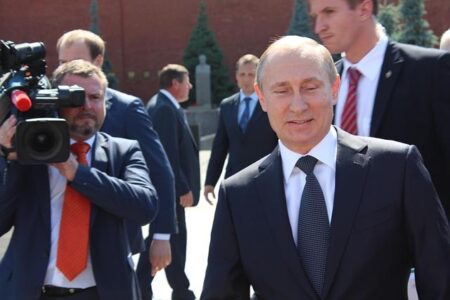Berlin is set to expand its fleet of fighter jets with a significant purchase from the United States, according to reports from German media. The move comes amid growing security concerns in Europe and ongoing efforts by Germany to modernize its military capabilities. Details about the number and type of aircraft are expected to emerge as negotiations progress, reflecting Berlin’s commitment to strengthening its defense partnerships with Washington.
Germany Expands Defense Capabilities with New US Jet Acquisition
Germany is set to enhance its air defense fleet through a significant procurement deal involving advanced fighter jets from the United States. According to multiple media sources, Berlin plans to acquire an additional batch of state-of-the-art aircraft to boost its military readiness amid escalating geopolitical tensions in Europe. This move aligns with Germany’s broader strategy to modernize its armed forces and meet NATO defense commitments more robustly.
Key aspects of the acquisition include:
- Expanded fleet capacity: Increasing the number of fighter jets to ensure rapid response capabilities.
- Technological advancements: Integrating next-generation avionics and weapon systems for superior operational efficiency.
- Strategic partnership: Strengthening defense ties between Germany and the United States amid global security challenges.
| Specification | Details |
|---|---|
| Jet Model | F-35 Lightning II |
| Units Planned | 35 |
| Delivery Timeline | 2025-2028 |
| Estimated Value | $5 Billion |
Strategic Implications for European Security and NATO Collaboration
Berlin’s decision to increase its acquisition of US fighter jets marks a significant shift in Europe’s defense landscape, reflecting heightened concerns over regional security amid rising geopolitical tensions. This move not only enhances Germany’s air combat capabilities but also signals a deeper integration with NATO’s strategic framework, emphasizing interoperability and shared defense commitments. The acquisition aligns with NATO’s broader objectives to modernize its member states’ military assets and maintain air superiority in a rapidly evolving security environment.
Key strategic implications include:
- Strengthening NATO’s eastern flank deterrence posture through enhanced air defense.
- Encouraging closer transatlantic military cooperation between Germany and the United States.
- Updating legacy fleet systems to counter emerging threats, including advanced missile technology.
- Enhancing rapid deployment capabilities in joint operations within the alliance.
| Aspect | Impact |
|---|---|
| Fleet Modernization | Boosts air operational readiness |
| Transatlantic Relations | Reinforces US-Germany defense ties |
| NATO Cohesion | Improves joint mission capabilities |
| Regional Security | Enhances deterrence on Russia’s border |
Assessing the Economic Impact and Recommendations for Future Procurement Policies
Germany’s decision to increase jet purchases from the US has significant ramifications for both domestic industries and the broader European defense landscape. Economically, the move bolsters US aerospace manufacturers, reinforcing transatlantic trade ties and potentially enhancing technological exchange. However, this procurement strategy risks marginalizing local German and European defense firms, potentially leading to reduced investments in homegrown innovation and job opportunities within the sector. Experts warn that extended reliance on foreign suppliers could also expose Berlin to supply chain vulnerabilities amid global geopolitical tensions.
To mitigate these risks while capitalizing on the benefits, future policies should emphasize a balanced approach. Recommendations include:
- Strategic co-production agreements to ensure technology transfer and local industry participation.
- Investment in dual-use technologies that serve both civilian and defense sectors, driving broader economic growth.
- Enhancing procurement transparency to maximize value for taxpayers and foster competitive bidding.
- Promotion of European defense collaboration to maintain industrial sovereignty and strengthen collective security.
| Impact Area | Positive Effects | Challenges |
|---|---|---|
| Economic Growth | Boost to US aerospace exports | Diminished domestic manufacturing |
| Technological Advancement | Access to cutting-edge US tech | Limited local R&D incentives |
| Political Relations | Strengthened US-Germany ties | Dependence on foreign suppliers |
To Wrap It Up
As Germany moves forward with plans to acquire additional fighter jets from the United States, the decision underscores its commitment to strengthening national defense amid evolving security challenges. The forthcoming deal, reported by media outlets including dw.com, highlights ongoing transatlantic cooperation and Berlin’s strategic efforts to modernize its military capabilities. Further details and official confirmations are expected in the coming weeks as negotiations progress.




